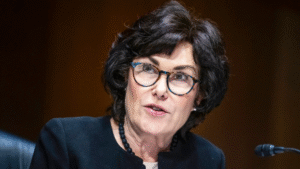Trump Team Suspends Student Loan Forgiveness Under IBR — In a move that stunned borrowers nationwide, the U.S. Department of Education announced on July 22, 2025, a temporary suspension of student loan forgiveness under the Income‑Based Repayment (IBR) program. This pause—cited as necessary for backend system updates—has created uncertainty for hundreds of thousands of borrowers who were inches away from relief. Here’s a comprehensive breakdown of what IBR means, why the freeze happened, analysis of its impact, and practical advice for affected borrowers.
What Is the IBR Plan — And How Did It Reach This Moment?
A. How IBR Works
The Income‑Based Repayment (IBR) plan is one of several income-driven repayment options available to federal student loan borrowers. Under this plan, borrowers pay either 10% or 15% of their discretionary income (depending on their start date), divided monthly, for 20 to 25 years. At the end of that term, any remaining loan balance is forgiven.
- Pre-2014 borrowers pay 15% over 25 years.
- Post‑July 1, 2014, borrowers pay 10% over 20 years.
This structure makes IBR a lifeline for those with heavy debt and low or variable income.
B. Why It Was Frozen—And Why It’s Unique
Of all the income‑driven repayment plans, including PAYE, ICR, and the stalled SAVE plan, IBR remained untouched by court orders—making it the only IDR option still legally clear. The Department of Education’s official guidance states the pause is solely “while our systems are updated,” a likely reference to reconciling months impacted by SAVE’s legal halt to processing.
What Borrowers Are Facing—and How You Can Navigate It
A. Who’s Impacted?
Borrowers who’ve made enough qualifying payments under IBR and were awaiting forgiveness are now in limbo—discharged loans are delayed, and interest may continue to accrue.
This affects hundreds of thousands, though exact figures are not yet released.
B. Workarounds & What You Can Do
While the pause remains in effect:
- Recertification is on hold: Expect delays when updating income or switching plans.
- Interest may continue accruing while systems are down.
- Alternative plans like PAYE or ICR are also frozen for applications—recurring recertifications are still being processed.
🔹 What you can do now:
- Stay on IBR—don’t switch unless absolutely necessary.
- Document everything—payments made, recertifications filed.
- Watch for announcements from studentaid.gov.
- Consult your servicer—they may offer forbearance guidance or back-dated credits.
Legal & Policy Context: Where This Freeze Fits In
A. The Wider IDR Turmoil
In February 2025, a Federal appeals court blocked the Biden‑era SAVE Plan, prompting temporary suspensions of all IDR applications and consolidation processes. The Education Department halted online access to IBR, PAYE, ICR, and SAVE—including processing of pending applications—despite IBR not being under court injunction. Student Loan Borrowers Assistance
B. The Trump Connection
Under President Trump’s second-term Education Chief, Linda McMahon, the department is realigning its federal loan strategies—prioritizing system integrity before resuming forgiveness. Meanwhile, broader policy moves—like revising PSLF eligibility—suggest a conservative overhaul of loan benefits. apnews.com
What Experts—and Bloggers—Are Saying
A. Independent Analysis
StudentLoanPlanner.com notes that a pause in IBR interrupts forgiveness timelines and may nudge borrowers into expensive forbearance periods.
B. Borrower Community Reactions
Reddit and forums are abuzz:
“I was told I was approved for forgiveness this month—now who knows when?”
They emphasize frustration, urging borrowers to closely track account balances, servicer notices, and recertification deadlines.
Looking Ahead—Timelines, Risks & Hope for Borrowers
A. When Will Forgiveness Resume?
The department states, “IBR forgiveness will resume once those updates are completed.” No dates have been given. Recent IDR disruptions lasted at least three months, suggesting the process could drag into late 2025.
B. What Can Borrowers Do in the Meantime?
- Request forbearance if interest becomes unmanageable.
- Use Fresh Start or other relief programs.
- Plan ahead: anticipate delayed forgiveness when assessing budgets or refinancing.
C. Long-Term Implications
This freeze may influence future policy:
- Congressional changes, such as the emerging “One Big Beautiful Bill Act,” could reshape IBR, PSLF, and others.
- If SAVE remains blocked, IBR could become the default path—assuming it’s relaunched successfully.
Conclusion
The suspension of student loan forgiveness under IBR marks a significant disruption in federal debt relief. While described as a temporary system upgrade, its ripple effects are delaying relief, increasing stress, and stirring uncertainty for thousands of borrowers. With experts warning of prolonged pauses and renewed policy proposals in the pipeline, affected individuals must stay vigilant, keep careful records, and explore interim support options.
Stay informed and prepared—current IBR borrowers should closely monitor studentaid.gov updates and remain in contact with loan servicers.
“Subscribe to trusted news sites like USnewsSphere.com for continuous updates.”





